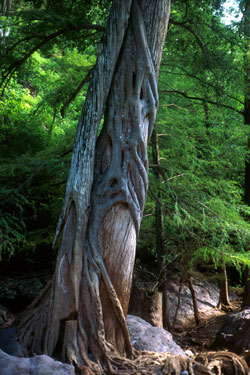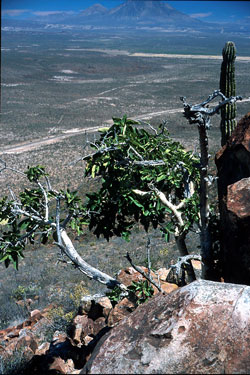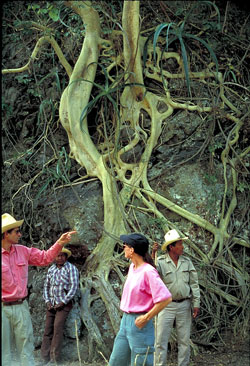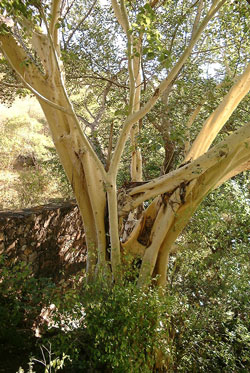Rock figs (tescalama): Ficus palmeri and F. petiolarisRock figs are a legacy of the tropical origins of the Sonoran Desert. They are a kind of strangler fig. Tropical strangler fig seedlings start life as epiphytes high on the branches of host trees. The fig roots encircle the host's trunk and eventually reach the ground. The roots then enlarge and squeeze the host tree's trunk while the upper branches overshadow it and starve it for light. The host dies and rots, leaving a hollow giant fig tree. There are no trees in the Sonoran Desert large enough to host a stranger fig seedling. Desert rock figs took to establishing on cliff faces and "strangling" rocks. They may live as dwarfed saxicoles their entire lives. But if their roots eventually reach the moist soil of a canyon bottom, they will grow into large trees.
|



